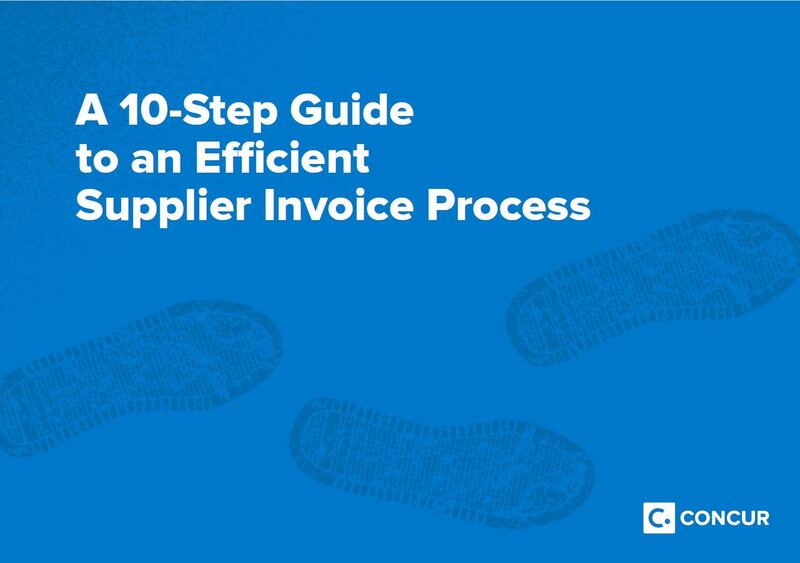Is your business leaving money on the table? If you’re not empowering your accounts payable (AP) team to add value to your business, that’s precisely what you are doing.
The fact is, good suppliers play a key role in any business. To keep them, you need to pay on time. If you don’t, not only do you risk damaging relationships, but you can incur late payment penalties. Timely payers, by contrast, are in a stronger position to negotiate better terms.
With so much at stake, it makes sense to equip your accounts payable team with the technology to help streamline their work, increase efficiencies, reduce errors and provide them with the power to collect and analyse payment data.

Despite this, AP teams are stuck doing things the way they always have, through time-costly data entry, working with outmoded paper invoices and spreadsheets. Worse still, as your business grows, they are stuck doing it in greater volumes.
So how can AP teams achieve higher levels of efficiency to free up valuable time and resources? It's the question answered by spend management software company Concur in their 10 Step Guide to an Efficient Supplier Invoice Process.
Identify opportunities
Aimed at finance teams looking to take a step back and review their end-to-end invoice process, the guide helps identify opportunities to streamline that process and cut out time-draining, manual tasks and risk areas, such as handling of duplicate, fraudulent or invalid invoices.

It answers such questions as what to look at when auditing your invoice process, how to tally what you are currently spending per invoice and how to reduce the inefficiencies of traditional paper invoices and spreadsheet management. It shows where to look to save time and reduce errors and, increasingly important, how to unlock the power of your payments data through smart reporting.
The average supplier invoice passes through numerous people on its journey across a typical business. Without efficient processes in place, this has the potential to significantly slow your workforce down and prolong the overall payment process.
Small business benefits
No longer the preserve of large companies with lots of staff and complex approval workflows, now small businesses can experience big benefits too from automated solutions that offer zero upfront costs, speedy installation and low ongoing usage fees.
AP automation enables the team handling your invoices to perform a more strategic role in the business, harnessing the data at their fingertips to provide better reporting and analytics, giving you access to data and insights that can make a real difference by, for example, helping you negotiate better deals.
Accounts payable teams occupy a uniquely supplier-facing position, and are typically made up of finance personnel with the skills and experience to provide a higher strategic function in your business, but the processes and tools they use to manage invoices are often so outdated that it is holding them – and your business - back. How could it not, if they are spending so much time on manual processes, without the ‘bandwidth’ to focus on higher value, strategic tasks? It’s one of the questions answered in the eBook.
56 per cent of finance teams surveyed were unable to identify their supplier invoice liabilities at any time
According to Concur’s research in the UK, 57 per cent of all invoices are still received on paper, and take more than seven days to process. Three out of five companies reported receiving duplicate supplier invoices, increasing the margin for error.
What’s more, 56 per cent of finance teams surveyed were unable to identify their supplier invoice liabilities at any time. With cash flow the life blood of all businesses, and credit still hard to find, having real-time visibility of your payment liabilities is key.
Calculate fees
Concur's 10 Step Guide to an Efficient Supplier Invoice shows you the key questions to ask yourself, helping you establish, among other things, how often you pay invoices late, how often you incur late payment fees and how much they cost you.
It also shows you how to work out how much time your team spends on answering queries from suppliers on payment, how confident you are that you have a full invoice audit trail for compliance purposes, and asks if you are effectively reclaiming VAT on your business purchases. And just how easy is it to see what has been spent per department over time?
It helps you assess whether or not you can easily identify individual supplier spend, which you can then use for negotiations, and whether or not your current system enables you to easily integrate this data with other spend metrics, to get a full financial picture.
Count the cost
Concur's research indicates that a retail business with 10 shops and 200 staff, receiving 1,000 invoices a month, each of which takes five minutes of data capture time, and six minutes of approvals time, plus six hours a month spent on "exception handling", amounts to 2,268 annual hours on invoice processing. That's an annual cost of more than €27,000 for processing alone. It takes no account of the costs associated with duplicate payments, late payment fees, and time wasted misdirecting paper and electronic invoices.
It shows how, while spreadsheets are a handy finance tool, they weren’t built to “shepherd” a process. They don’t have the in-built workflows and triggers needed to keep the AP process moving and shorten the payment cycle. Automation does, and the more steps you take out of the AP process, the higher the levels of accuracy, efficiency and visibility you can expect.
Measure the benefits
In a 12-month period, Concur identified and stopped €6.97 million worth of duplicate invoices being paid by its UK clients. It also helped client companies avoid late payment fees and reduce the hidden cost of the drain on resources caused by re-keying data, chasing invoices and approvals and processing them manually, not to mention fielding calls from suppliers checking the status of their payments.
That’s time that could be better spent analysing spend and negotiating discounts or, in other words, taking money off the table and into your business.










